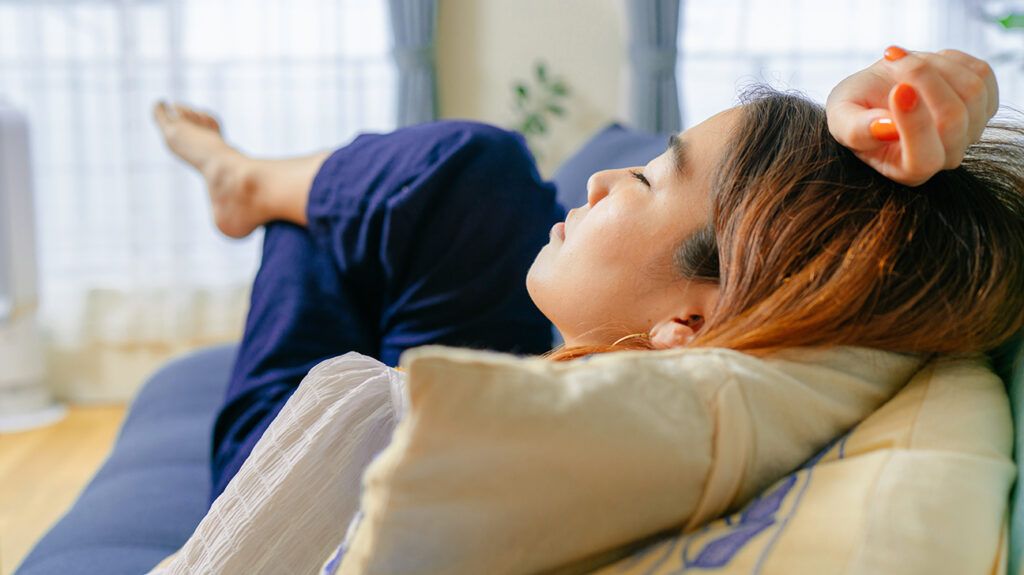Narcolepsy is a disorder that affects the brain’s ability to control sleep-wake cycles. Having chronic bouts of extreme sleepiness during the day is the hallmark of this condition.

If you live with narcolepsy, you’ll know that these sleep disturbances can have a significant impact on your daily activities, like driving, socializing, and eating. You may unwillingly fall asleep during these activities or fear that you might.
Narcolepsy may also involve unexpected loss of muscle control, known as cataplexy. Some people can mistake this for fainting or seizure activity. The symptoms of narcolepsy can lead to accidents, injuries, or life-threatening situations.
Narcolepsy is a rare but frequently underdiagnosed chronic condition affecting about 1 in 2,000 people. The symptoms of narcolepsy begin between the ages of 10 and 50 years, although the condition is often misdiagnosed.
While there’s no cure for narcolepsy, various treatment options can help you manage the condition.
Narcolepsy, a neurological sleep-wake disorder, causes chronic attacks of sleepiness during the day and poor sleep at night. This is called daytime sleepiness, sometimes called EDS. Attacks of sleepiness can last a few seconds or several minutes. These episodes vary in frequency and can occur multiple times during a single day.
To better understand the symptoms of narcolepsy, we need to learn more about how a regular sleep cycle works:
It takes an average adult about
Someone with narcolepsy may enter REM sleep immediately. They can also enter this sleep stage during periods of wakefulness. This explains the loss of muscle tone and the vivid visual hallucinations patients with narcolepsy may experience during the sleep attacks
Other names for narcolepsy, though not commonly used, include:
- Gelineau syndrome
- hypnolepsy
- narcoleptic syndrome
- paroxysmal sleep
There are two major types of narcolepsy:
- Type 1 narcolepsy. Previously termed narcolepsy with cataplexy, type 1 narcolepsy is diagnosed in individuals with low levels of hypocretin (orexin), a brain hormone that regulates arousal, wakefulness, and appetite. Type 1 narcolepsy is characterized by cataplexy, sudden loss of muscle control, and excessive daytime sleepiness.
- Type 2 narcolepsy. People with type 2 narcolepsy don’t experience this muscle weakness. They also have normal levels of hypocretin. They mainly experience excessive daytime sleepiness and other accessory symptoms of narcolepsy.
There’s also secondary narcolepsy, a form of the condition that occurs following an injury to the hypothalamus, a region deep in the brain that plays a significant role in the production of hypocretin (orexin).
Narcolepsy affects an estimated 1 in every 2,000 people in the general population, but the exact number of people with narcolepsy is unknown. One U.S. study placed the rate of new cases at 0.74 per 100,000 people per year.
However, because narcolepsy is often misdiagnosed, working out its true prevalence in the general population is challenging. Estimates suggest that only 25% of people with narcolepsy have been diagnosed and are receiving treatment.
The onset of narcolepsy can occur any time between early childhood and 50 years. Still, the peak period is between 15 and 36 years of age.
While the severity of the symptoms may vary over time, the disorder itself is not progressive, meaning it doesn’t get worse over time. In most cases, it’s a lifelong condition.
The most common symptoms of narcolepsy are:
- excessive daytime sleepiness
- frequent nighttime awakenings
- sleep paralysis
- cataplexy, including partial cataplexy
- visual hallucinations
While excessive daytime drowsiness affects everyone with narcolepsy, only
The following sections look at these symptoms in more detail:
Excessive daytime sleepiness
This is a sudden overwhelming urge to sleep, despite feeling rested. In between “sleep attacks,” people have normal levels of alertness. These episodes of excessive daytime sleepiness can occur at any time, during any activity.
Cataplexy
Cataplexy is a sudden, temporary loss of muscle control. It often happens during times of intense emotions, such as laughter, anger, or surprise. Episodes can last a few seconds or extend to a few minutes.
You may experience attacks that cause your knees to buckle, jaw to sag, eyelids to drop, or head to fall. In some cases, you may experience a complete loss of muscle control or paralysis for a few minutes.
During a severe cataplexy attack, speech and movement may become almost impossible, although there is no loss of consciousness.
Sleep paralysis
Sleep paralysis is a temporary inability to speak or move while falling asleep or waking up. Symptoms of sleep paralysis usually don’t last for more than a few minutes.
Sleep paralysis often occurs in moments when people are conscious and somewhat awake. Once the paralysis episodes end, people recover their total capacity to move and speak.
Hallucinations
Some people also experience hallucinations that occur at the beginning or end of a sleep period. In most cases, hallucinations occur in conjunction with sleep paralysis and tend to be visual, but other senses can be involved too.
Fragmented sleep and insomnia
Narcolepsy can also disrupt sleep with vivid dreaming, insomnia, and periodic leg movements. This is why narcolepsy can be misdiagnosed with other sleep conditions, such as obstructive sleep apnea, insomnia, and restless leg syndrome.
Automatic behaviors
Because people with narcolepsy can fall asleep for a few seconds during certain activities, it’s common for them to adapt automatic behaviors.
You may fall asleep and automatically continue the activity for a few seconds or minutes without realizing you’re doing it. This happens when you’re actively engaged in an activity, like typing or driving.
The precise cause of narcolepsy remains unknown. There’s a link between low levels of hypocretin and people with type 1 narcolepsy. This brain chemical plays a critical role in regulating sleep and other brain functions.
Researchers note that the number of neurons that produce hypocretin is significantly lower in individuals with narcolepsy.
A
This variant gene gives people a genetic predisposition to developing narcolepsy. Other genes known as the human leukocyte antigen (HLA) may also play a role in the onset of type 1 narcolepsy.
Although the cause of narcolepsy is not entirely understood, some related factors include:
- Autoimmune disorders. Researchers believe that people with narcolepsy have an overly reactive immune system that attacks the hypocretin-containing brain cells. However, the precise cause of hypocretin cell loss is unknown.
- Family history. While most cases of narcolepsy are sporadic, about
10% of individuals report having a close relative with similar symptoms. - Brain injuries. In rare cases, narcolepsy can occur after a traumatic injury to the hypothalamus, the part of the brain that regulates sleep. Tumors and other diseases in the same region may also be related.
Narcolepsy is diagnosed with a detailed clinical examination and objective overview of the medical history. The doctor will often ask you to keep a sleep journal or log, noting sleep times, symptoms, and episodes over two weeks.
While some symptoms are not exclusive to narcolepsy, cataplexy is the one symptom that rarely occurs in other diseases.
A physical exam can also help rule out or identify other neurological conditions that could be causing the symptoms. There are two specialized tests to diagnose narcolepsy:
Polysomnogram (PSG)
This is an overnight sleep study that analyzes brain and muscle activity, breathing levels, and eye movements. A polysomnogram helps reveal whether REM sleep occurs too early in the sleep cycle and if the symptoms result from other conditions, like obstructive sleep apnea.
Multiple sleep latency test (MSLT)
The multiple sleep latency test assesses daytime sleepiness levels by measuring how quickly someone falls asleep and whether they enter REM sleep. This test is always performed immediately after a polysomnogram.
For this test, you’re asked to take five short naps, separated by two hours, over the course of a day. If you fall asleep in less than
In addition, the doctors will analyze whether REM sleep happens within 15 minutes in at least two of the five MSLT naps, including the PSG the night before. If these two factors are found, it might be an indicator of narcolepsy. Also, you may be required to take a drug test the morning of the MSLT. The drug test is to ensure that your MSLT will be accurate. There are a number of drugs that can affect the results of your sleep study.
At the moment, there is no cure for narcolepsy. But, you can manage your symptoms with medicines and lifestyle changes.
Most narcolepsy symptoms are lifelong, but with treatment, you can control them:
Some medication options for narcolepsy
- Modafinil (Provigil). This is a central nervous stimulant that’s less addictive than previously prescribed stimulants. Modafinil can help reduce daytime drowsiness and improve alertness.
- Stimulants. In cases where modafinil is ineffective, stimulants such as methylphenidate can help alleviate daytime sleepiness. However, these medications can also cause irritability and nighttime sleep disruption. In addition, amphetamine-like stimulants carry a high potential for addiction.
- Antidepressants. Two classes of antidepressant drugs — tricyclics and selective serotonin and noradrenergic reuptake inhibitors (SNRIs) — have proven effective in controlling cataplexy in individuals with narcolepsy.
- Sodium oxybate. Also known as gamma hydroxybutyrate or GHB, sodium oxybate is approved by the FDA to treat excessive daytime sleepiness and cataplexy in individuals with narcolepsy. It’s a strong sedative that can be taken at night.
Lifestyle changes
Even with medications, not everyone will be able to maintain an entirely normal state of alertness. Drugs are best used when paired with lifestyle changes that can help manage the symptoms. These include:
- taking shorter and scheduled naps throughout the day at times when you tend to feel sleepiest
- maintaining a structured sleep schedule to improve sleep quality
- avoiding caffeine or alcoholic beverages several hours before bedtime to prevent sleep disturbances
- avoiding smoking, especially at night
- exercising daily for at least 20 minutes to improve sleep quality and help you maintain a moderate weight
- avoiding large meals before bedtime, as a heavy meal can make it harder to sleep
- practicing some relaxation ritual before bedtime, such as taking a warm bath, meditating, or journaling
Support groups
Support groups can be beneficial for people with narcolepsy. Attending support group meetings can teach people new ways to cope with their symptoms or feel less socially isolated. These groups also provide a network of social contacts who can offer emotional support and assistance when needed.
If you’re unsure whether you or a loved one has narcolepsy, finding a specialist may help. You can look for healthcare professionals with experience with this disorder. You may find these specialists through organizations, clinical trials, or through a referral from your primary physician.
Organizations such as Wake Up Narcolepsy (WUN) can help you stay updated with the latest developments around narcolepsy. They often invite people to participate in research projects and events to raise awareness about the condition.
Other organizations include:
- Hypersomnia Foundation
- Narcolepsy Network
- Project Sleep
- National Sleep Foundation
- The NICER Foundation (Narcoleptics In Crisis Emergency Relief)
There are also clinical trials related to narcolepsy that you can participate in, listed in ClinicalTrials.gov.
Living with narcolepsy can be challenging and, at times, frustrating. Having a strong support system, making lifestyle changes, and seeking medical assistance can make a big difference.
